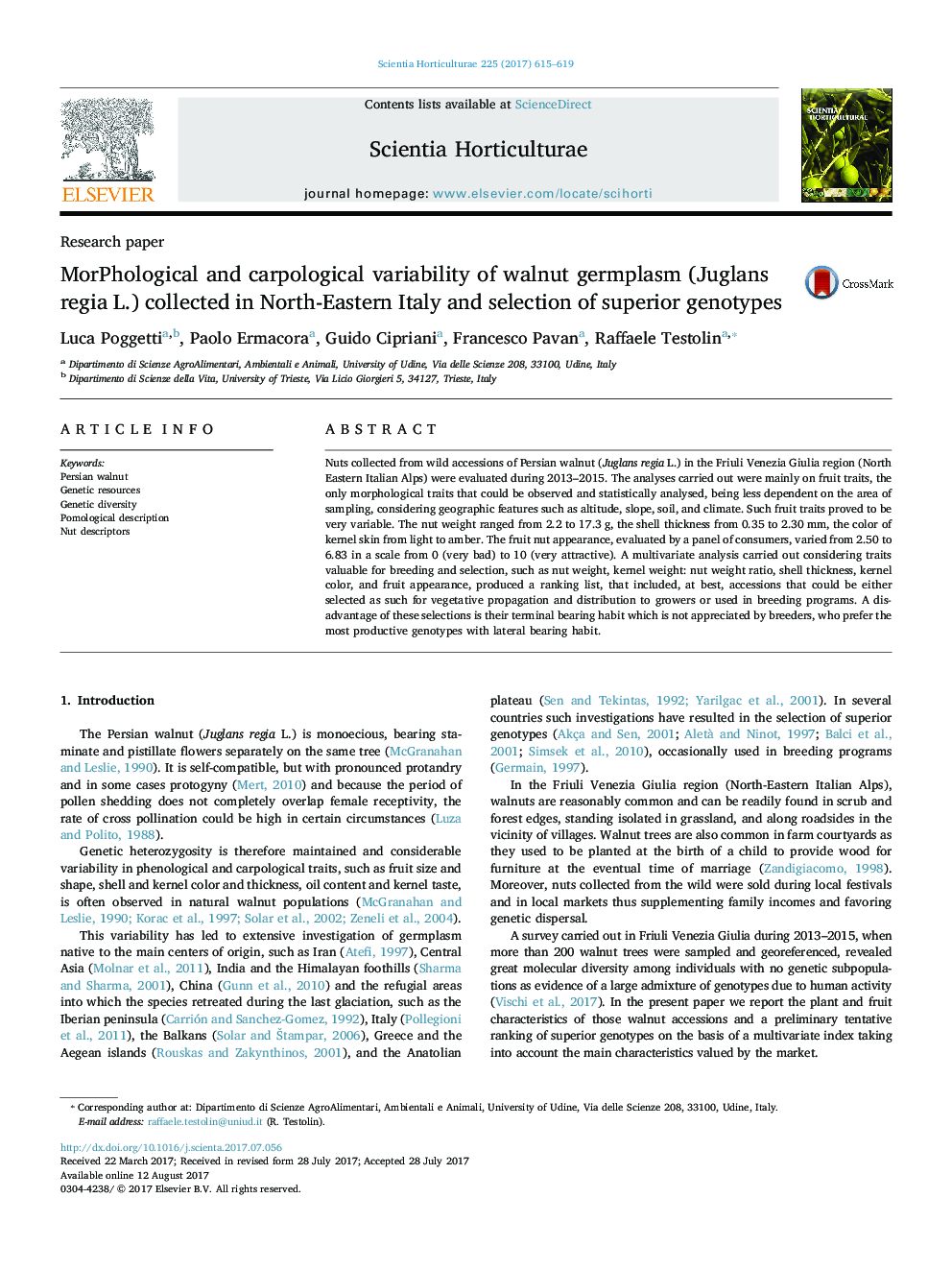| Article ID | Journal | Published Year | Pages | File Type |
|---|---|---|---|---|
| 5769310 | Scientia Horticulturae | 2017 | 5 Pages |
â¢More than 200 wild walnut accessions sampled in the North Eastern Italian Alps.â¢A large phenotypic variability in weight, shell thickness, kernel skin color, appearance and taste found.â¢A multivariate analysis applied to the selection of superior genotypes.â¢The common 'terminal bearing' habit limits the productivity.â¢The 'lateral bearing' trait need to be introduced through a breeding program.
Nuts collected from wild accessions of Persian walnut (Juglans regia L.) in the Friuli Venezia Giulia region (North Eastern Italian Alps) were evaluated during 2013-2015. The analyses carried out were mainly on fruit traits, the only morphological traits that could be observed and statistically analysed, being less dependent on the area of sampling, considering geographic features such as altitude, slope, soil, and climate. Such fruit traits proved to be very variable. The nut weight ranged from 2.2 to 17.3Â g, the shell thickness from 0.35 to 2.30Â mm, the color of kernel skin from light to amber. The fruit nut appearance, evaluated by a panel of consumers, varied from 2.50 to 6.83 in a scale from 0 (very bad) to 10 (very attractive). A multivariate analysis carried out considering traits valuable for breeding and selection, such as nut weight, kernel weight: nut weight ratio, shell thickness, kernel color, and fruit appearance, produced a ranking list, that included, at best, accessions that could be either selected as such for vegetative propagation and distribution to growers or used in breeding programs. A disadvantage of these selections is their terminal bearing habit which is not appreciated by breeders, who prefer the most productive genotypes with lateral bearing habit.
